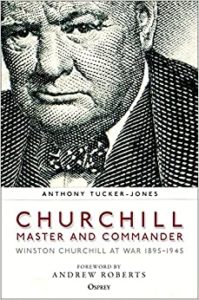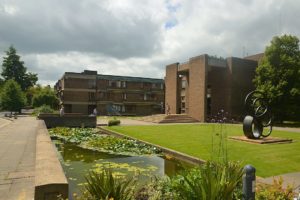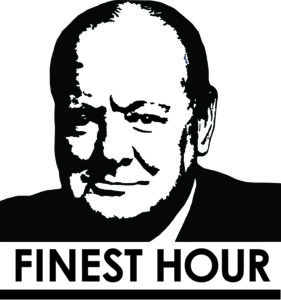
Finest Hour 195
“An Extraordinary Advantage”
Winston Churchill, Robert Watson-Watt and the Development of Radar
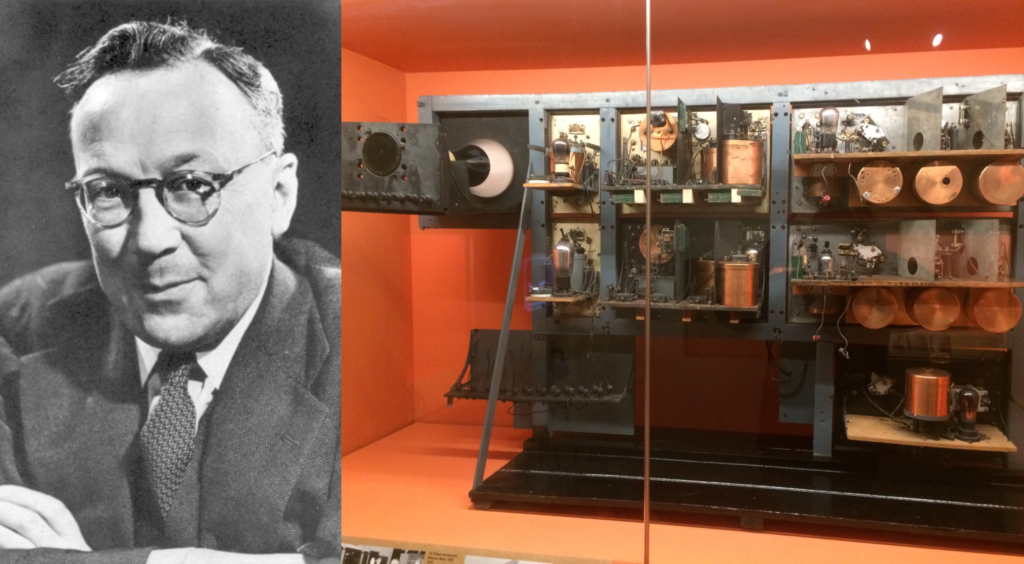
Robert Watson-Watt and the first radar set
November 23, 2022
Finest Hour 195, First Quarter 2022
Page 22
By Fred Glueckstein
Fred Glueckstein is author of Sir Winston Churchill: Published Articles by a Churchillian (Xlibris, 2021).
Just prior to his death in 1930, an Italian airman, General Giulio Douhet, had published The War of 19– . Douhet argued that armies and navies should be relegated to defensive roles while bomber fleets won the war. “Any nation investing heavily in air defense was risking defeat,” he wrote, for “No one can command his own sky if he cannot command his adversary’s sky.”1 Douhet’s major convert was Hermann Göring, the head of the Luftwaffe, the German air force.
Air Chief Marshal Sir Hugh Dowding, who later commanded the Royal Air Force (RAF) in the Battle of Britain, thought Douhet’s thesis fatally flawed. Dowding and eminent British scientists (colleagues of Prof F. A. Lindemann, Winston Churchill’s prime scientific adviser— see story p. 14) convinced Churchill that every offensive weapon could be countered by imaginative, intrepid defenders.
Dowding and the scientists later briefed Churchill on RDF, an acronym so highly secret that until the war only a few men would know of it. RDF was the British abbreviation for Range and Direction Finding, or as the Americans were to christen it, radar.

2024 International Churchill Conference
The British pioneer of RDF and radar technology was Robert Watson-Watt, a scientific civil servant. Churchill would recognize that Watson-Watt had the foresight to apply the concept of radar to a military system. Watson-Watt’s scientific contribution of RDF was a major factor in winning the Battle of Britain and ultimate victory.
The Scientific Scot
Born in Brechin, Angus, Scotland, on 13 April 1892, Robert Alexander Watson Watt, the youngest son of a carpenter, was a descendant of James Watt, the famous engineer and inventor of the practical steam engine. His pride in his ancestry later led him to use the two names of “WatsonWatt.”
Watson-Watt attended University College, Dundee, where he studied natural philosophy and graduated with special distinction in electrical engineering. On graduation, he was offered an appointment as assistant by natural philosophy professor William Peddie.
Peddie encouraged WatsonWatt to study radio, or “wireless telegraphy” as it was then known. Peddie took him through what was effectively a postgraduate class on the physics of radio frequency oscillators and wave propagation. At the start of the First World War, Watson-Watt was working as an assistant in the College’s Engineering Department.
In 1915, the War Office invited Watson-Watt to join the staff of the Meteorological Office. The department wanted someone to work on the possibility of giving timely thunderstorm warnings to the aviators of the infant Royal Flying Corps, soon to become the RAF. WatsonWatt’s invention of a directionfinding device measured the bearing of thunderstorms and their distance. The early warning system by Watson-Watt was the first step towards his subsequent radar discoveries.
In 1927, the Radio Research Station was formed with WatsonWatt as director. The teams became interested in the causes of “static” radio signals and found that much could be explained by distant signals located over the horizon being reflected off the upper atmosphere.
Cult of the Imperfect
In 1934, the Air Ministry set up the Committee for the Scientific Survey of Air Defence under the chairmanship of Sir Henry Tizard to find ways to improve air defence in the UK.
In January 1935, rumors that Nazi Germany had developed a “death ray” that was capable of destroying towns, cities, and people using radio waves were given attention by Harry E. Wimperis, Director of Scientific Research at the Air Ministry. Wimperis asked Watson-Watt, then a senior civilian in the Department of Scientific and Industrial Research, about the possibility of building a version of a deathray specifically to be used against aircraft. Watson-Watt wrote a memorandum that said such a device was impossible to construct.
In its concluding paragraph, however, Watson-Watt wrote: “Meanwhile attention is being turned to the still difficult but less unpromising problem of radio-detection as opposed to radio-destruction, and numerical considerations on the method by reflected radio waves will be submitted when required.” Watson-Watt believed this document was, “if not the birth certificate of radar, at least a fairly confident intimation of benefits to come.”2
Over the years, WatsonWatt recognized that his initial patterns, or designs, would improve performance: “I declare the overall pattern to be the product of a then unconscious ‘Cult of the Imperfect.’ The cult became explicit in my too oft-quoted slogan for radar development. ‘Give them the third best to go on with; the second best comes too late, the best never comes.’”3
In early February 1935, while heading the radio department of the National Physical Laboratory in Teddington, Watson-Watt wrote a memorandum to the British government called “Detection and Location of Aircraft by Radio Methods” in which he explained how radio waves could be used to detect aircraft. The Air Ministry received the paper on 12 February but, before authorizing research funding, asked for a demonstration proving that radio waves could be reflected by aircraft.
The demonstration of RDF occurred on 26 February. It consisted of two receiving antennae located about six miles away from one of the BBC’s shortwave broadcast stations at Daventry. The two antennae were phased such that signals travelling directly from the station cancelled themselves out, but signals arriving from other angles were admitted, thereby deflecting the trace on a cathode-ray tube indicator.
Due to the secrecy of the test, only three people witnessed it: Watson-Watt, his colleague Arnold Wilkins, and A. P. Rowe, a member of the Air Ministry. The demonstration was a success. Signals from a BBC short-wave transmitter were bounced off a Handley Page Heyford bomber at 6,000 feet flying twenty miles out. Prime Minister Stanley Baldwin was quietly informed of the successful demonstration at Daventry, where today there is a small plaque commemorating the first successful detection of a plane by radio waves.
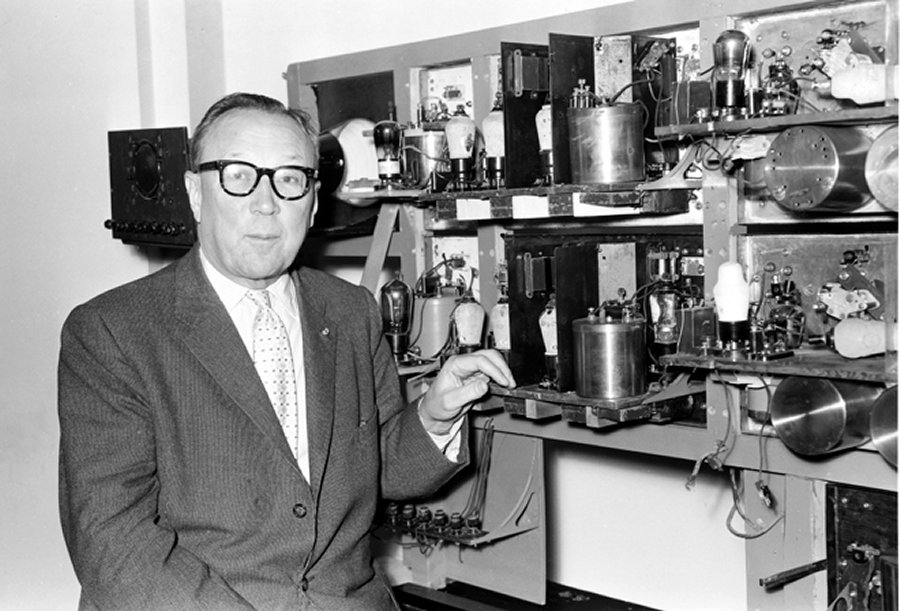
Enter Churchill
In early July 1935, Baldwin invited Churchill to become a member of the newly formed Air Defence Research subcommittee of the Committee of Imperial Defence. Churchill accepted conditional on the appointment of Prof. Lindemann to the Tizard Committee. At the first subcommittee meeting Churchill attended, Watson-Watt outlined the nature and potential of radar. What Wimperis called in his diary “a fine discussion” about the new invention took place, during which Churchill gave his views in a four-line penciled note passed across the table:
Seeking, Finding, Following,
Keeping,
Is he sure to bless?
Angels, Martyrs, Prophets,
Virgins,
Answer: “M, Yes.”4
In February 1936, Lindemann, who had known Watson-Watt for more than twenty years, wrote Churchill a letter, “commending the successful work of WatsonWatt on detection declaring himself ‘an enthusiastic believer.’”5 On 13 March 1936, the Tizard Committee recommended that Watson-Watt be transferred from the Department of Scientific Research to the Air Ministry staff. The Air Ministry agreed.
In early June 1936, Lindemann told Watson-Watt that Churchill would like to meet with him. The three gathered privately at Chartwell, Churchill’s house in Kent, on 12 June 1936. Afterwards Watson-Watt wrote:
Winston Churchill expressed anxiety about whether the speed of advance in R.D.F. was as great as could be attained. I replied that it most certainly was not, and I went on to give my diagnosis of the prime cause of avoidable delays. It was that the Air Ministry was stubbornly adhering to a foredoomed policy. It was attempting to force its normal machinery to revolve at an abnormal rate, instead of setting up abnormal machinery to meet a highly abnormal need. Even after acceleration, the normal machinery was already holding up our rate of advance.6
Later that day, WatsonWatt wrote Sir Frank Smith, Acting Director of the National Physical Laboratory, a summary of the afternoon’s events. The summary cited examples given to Churchill of the matters calling for urgent actions: “(1) the direction-finding organization, which had never, so far as I knew, been tested in conditions at all comparable to war conditions, (2) the acoustic detection system, similarly restricted in tests to artificially simple conditions, and (3) the elaboration by Air Ministry and Post Office of ground communication systems for the Observer Corps before the probable wartime utility of the Corps had been adequately examined.”7
Watson-Watt delivered copies of the summary to Churchill and Lindemann. He was later informed that Churchill had read extracts from his summary of their talk at a meeting of the Air Defence Research Committee. Watson-Watt’s urgent recommendations were then implemented.
In the immediate years after 1936, Watson-Watt acknowledged there was no recognition that radar interested the Royal Navy or the British Army. In June 1939 Churchill, after visiting the radar towers with Watson-Watt at Bawdsey, wrote to Air Minister Sir Kingsley Wood:
The progress in R.D.F., especially applied to rangefinding, must surely be of high consequence to the Navy. It would give power to engage an enemy irrespective of visibility. How different would have been the fate of the German battle cruisers when they attacked Scarborough and Hartlepool in 1914, if we could have pierced the mist! I should have thought this was one of the biggest things that had happened for a long time, and all for our benefit. The method of discrimination between friend and foe is also of the highest consequence to the Navy, and should entirely supersede signals with all their peril. I presume the admiralty know all about it.
We are on the threshold of immense securities for our island. Unfortunately, we want to go farther than the threshold and time is short.8
Despite Churchill’s warning, the Admiralty took no immediate action to equip naval ships with RDF.
The Second World War
Churchill returned to the Admiralty at the outbreak of war in 1939. According to biographer William Manchester, “Admiral Fraser, the flag officer responsible for naval construction, later wrote how Winston stunned him by asking him point-blank: ‘Well, Admiral, what is the navy doing about RDF?’ Fraser was tongue-tied. Radar was the most closely guarded secret in the British military establishment, roughly comparable to America’s Manhattan Project three years later. ‘A number of able officers were working on the problem’ Fraser said, ‘but to make any real progress a high degree of priority—especially in finance— was essential.’” Fully developed RDF had been a casualty of Prime Minister Neville Chamberlain’s cuts in military spending. Churchill was aware that not a single vessel in the Royal Navy had been equipped with RDF. After a long silence, he said: “Well, Admiral, it is very important.”9 Later, Churchill sent Fraser an instruction that all British warships, particularly “those engaged in the U-boat fighting,” be provided “with this distinguishing apparatus.”10 Fraser wondered how Churchill, a backbencher until the day England declared war on Germany, had heard about RDF.
“Progress in every branch of Radar was constant and unceasing during 1939, but even so the Battle of Britain from July to September 1940 was fought by eye and ear,” wrote Churchill.11 “Radar was still in its infancy, but it gave warning of raids approaching our coast, and the observers, with field-glasses and portable telephones, were our main source of information about raiders flying overland.”12
Research also focused on the development of radar technology for an air-to-air role, in which it could be used by the RAF and the Fleet Air Arm for searching, tracking, and combat. In his memoirs Churchill explained:
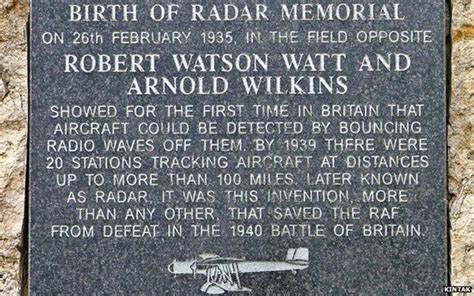
Since the beginning of the war we had brought into active production a form of air-borne Radar called A. I. (Airborne Interception radar), on which the Air Defence Research Committee had fruitfully laboured from 1938 onwards, and with which it was hoped to detect and close on enemy bombers. This apparatus was too large and too complicated for a pilot to operate himself. It was therefore installed in two-seater Blenheims, and later in Beaufighters, in which the observer operated the Radar, and directed his pilot until the enemy aircraft became visible and could be fired on—usually about a hundred yards away.13
Radar was installed in Coastal Command aircraft in September 1940. The first aerial radarassisted attack on a U-boat occurred on 19 November 1940 and the first sinking of a U-boat on 30 November 1941. Churchill also wrote of yet another important application: “By fitting our A[anti]A[aircraft] batteries with Radar it was possible to predict the position of an enemy aircraft accurately….”14
Victorious Partnership
On the use of radar by the British, German General of the Fighters Adolf Galland later wrote:
The British had from the first an extraordinary advantage, never to be balanced out at any time in the whole war; their radar—and fightercontrol network. It was for us and our leadership a freely expressed surprise, and at that a very bitter one, that Britain had at its disposal a close-meshed radar system, obviously carried to the highest level of current technique, which supplied the British “Fighter Command” with the most complete basis for direction imaginable. Thus the British fighter was guided from take-off right to the appropriate position for attack on the German formations.15
Churchill’s backing of Watson-Watt at a critical time in the early testing of radar led to the crucial development of airborne, shipborne, sea, and land installations and technologies. The Prime Minister recognized that the scientist had the foresight to apply the concept of radar to a military system, which ultimately saved the country from invasion. Not surprisingly, Watson-Watt received a knighthood on Churchill’s recommendation in 1942, only half-way through the war.
Watson-Watt, in turn, recognized the crucial support he had received from Churchill, writing in 1959 that “The wisdom of British statesmen in their appreciation of the importance, to national security and to international stability, of science and its practitioners, is the true leitmotif in the drama of radar. The leitmotif must be remembered by those who follow, after the drama has faded to history and the players to dust.”16
Sir Robert Watson-Watt died in Inverness, Scotland on 5 December 1973, aged eighty-one. His scientific contributions to the British war effort were as immeasurable as Churchill’s vital and timely support. Their partnership helped to save the West.
Endnotes
1. William Manchester, The Last Lion: Winston Spencer Churchill, Alone, 1932–1940 (New York: Little, Brown and Company, 1988), p. 97.
2. Robert Watson-Watt, The Pulse of Radar (New York: The Dial Press, 1959), p. 53.
3. Ibid., p. 46.
4. Martin Gilbert, The Churchill Documents, vol. 13, The Coming of War, 1936–1939 (Hillsdale, MI: Hillsdale College Press, 1982), p. 201, n. 1. Churchill’s lines are a variation on the final verse of the hymn “Rest” as published by Novello in The Hymnary of 1872, two years before Churchill’s birth.
5. Andrew Roberts, Churchill: Walking with Destiny (New York: Viking, 2018), p. 392.
6. Robert Watson-Watt, Three Steps to Victory: A Personal Account of Radar’s Greatest Pioneer (London: Odhams, 1957), p. 147.
7. Ibid., pp. 148–49.
8. Ibid., p. 157.
9. Manchester, p. 573.
10. Winston S. Churchill, The Second World War, vol. II, Their Finest Hour (London: Cassell, 1951), p. 338.
11. Ibid., p. 294.
12. Ibid., p. 345.
13. Ibid., p. 347.
14. Ibid.
15. Watson-Watt, The Pulse of Radar, p. 202.
16. Ibid., pp. 90–91.
Subscribe
WANT MORE?
Get the Churchill Bulletin delivered to your inbox once a month.
